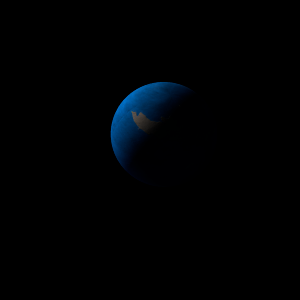|
|
Space Astro
|
Info for exoplanet "Liariel"
| Scientific (actual) data |
|---|
| Planet | Kepler-192 b |
| Planet status | Confirmed |
| Radius | 0.244 |
| Orbital period | 9.92675 |
| Semi major axis | 0.09 |
| Discovered | 2014 |
| Updated | 2021-02-05 |
| Tconj | 2455010 |
| Impact parameter | 0.38 |
| Publication | Announced on a website |
| Detection type | Primary Transit |
| Alternate names | 2MASS J19114030+4535343 b, K00584.01, KIC 9146018 b, KOI-584 b, KOI-584.01, WISE J191140.31+453534.2 b |
| Star name | Kepler-192 |
| Right ascension | 287.92° |
| Declination | 45.59° |
| Mag j | 12.892 |
| Mag h | 12.512 |
| Mag k | 12.427 |
| Star distance | 664.14 |
| Star metallicity | -0.153 |
| Star radius | 1.01 |
| Star temperature | 5479 |
| Star alternate names | 2MASS J19114030+4535343, KIC 9146018, KOI-584, WISE J191140.31+453534.2 |
| Wikipedia article | Kepler-192 b |
Back
| |
| Fictional info (?) |
|---|
| Suggested name | Liariel |
| Planet type | Warm planet |
| Liariel is a terrestrial planet with a thin atmosphere, having surface features reminiscent both of the impact craters of the Moon and the valleys, deserts, and polar ice caps of Earth. Liariel is orbiting Kepler-192 every 9.9 Earth days.
Liariel is the closest planet to Kepler-192 and one of the oldest in its solar system. The interior of Liariel is mainly composed of ices and molten metal. It is named after the deity Liariel, the god of chaos.
The atmospheric pressure at the planet's surface is 17 bar, or roughly the pressure found 765 m under the oceans of Rirti Pe.
As the closest planet to Rirti Pe, Liariel has been a prime target for early interplanetary exploration.
Surrounding Liariel is a large planetary ring system and a powerful magnetosphere.
In late February 3400, Liariel was visited by the New Horizons probe, which used Liariel's gravity to increase its speed and bend its trajectory en route to Rirti Pe.
The oceans are full of friendly terraformed oceanic creatures that spend their life in caves by consuming smaller pray. They are related to Eripeao The but have 3 eyes and vary in size from 9 to 12 cm. Most Ijiban-si can endure temperatures from -90 to -40°C and also intense weather. |
| Estimated population | 60000000 |
| Atmosphere | Methane | 45% |
| Carbon dioxide | 34% |
| Water | 21% |
| Oxygen | 0.00014% |
| Atmospheric pressure | 17 bar |
 |
| Moon | Rirao | Medium-sized slightly egg-shaped oceanic planetoid |
| Tipro Pe | Medium-sized round rocky planetoid |
| Camne | Small almost round rocky moon |
| Dilhali | Small round ice asteroid |
| Tania Siid | Small almost round rocky moon |
| Dorahiepi | Large round rocky moon |
| Google search for Liariel |
|
Website by Joachim Michaelis
|
|
|
|